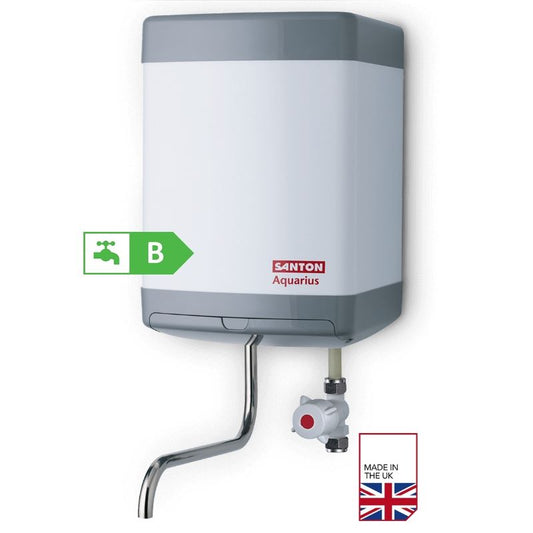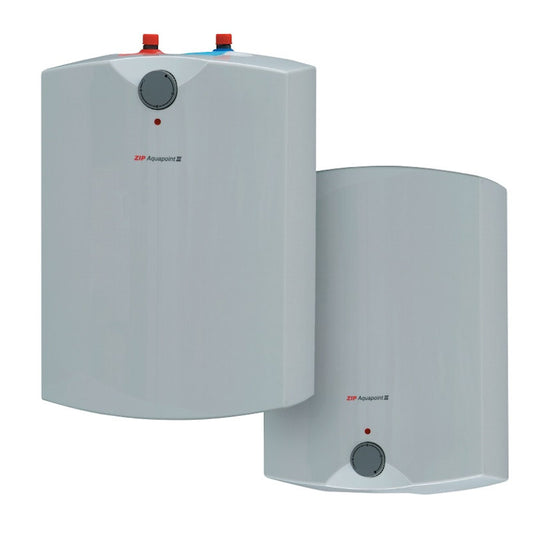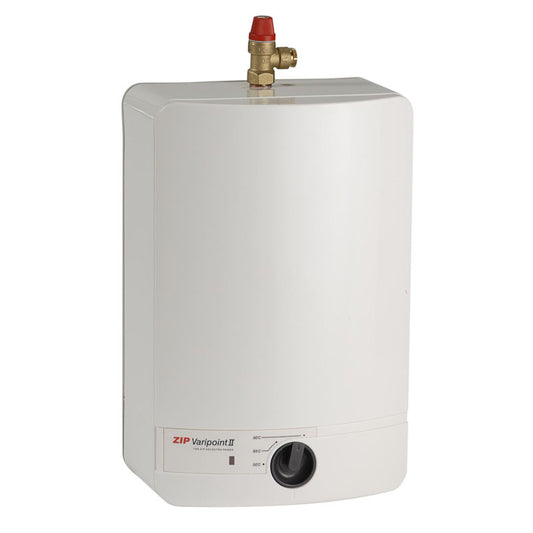Over sink water heaters are a type of point-of-use electric water heater designed to be mounted directly on the wall above or next to a sink or washbasin. Their key advantage is their compact size and convenient placement, which provides quick access to hot water without the need for a central heating system or long pipe runs. This makes them an ideal solution for small kitchens, offices, utility rooms, workshops, or any location where a standalone handwashing station is needed.
The categories of over sink water heaters are primarily defined by their heating method and their pressure system.
1. Storage Over Sink Water Heaters
These heaters have a small, insulated tank that stores and heats a specific volume of water, keeping it ready for immediate use.
- Capacities: Typically range from 5 to 30 litres (1.3 to 8 gallons), designed for low to medium demand.
- How they work: Cold water enters the tank and is heated by an electric element controlled by a thermostat. The water is maintained at a set temperature, so it's instantly available when the tap is opened. The tank then refills with cold water, and the heating cycle begins again.
- Key Features:
- Ready Supply: Provides a small reservoir of hot water for tasks like washing dishes or hands.
- Thermostatic Control: Allows for precise temperature setting and prevents overheating.
- Installation: Their compact, wall-mounted design saves valuable under-sink cabinet space.
- Limitations: The supply of hot water is limited by the tank's capacity. They have a small amount of standby heat loss.
2. Instantaneous (Tankless) Over Sink Water Heaters
These heaters do not have a storage tank. They heat water on demand as it flows through the unit.
- How they work: When the tap is turned on, a sensor detects the water flow and activates a powerful electric element, heating the water as it passes through the unit. The heater turns off as soon as the tap is closed.
- Key Features:
- Energy Efficiency: They only use electricity when hot water is being drawn, eliminating standby heat loss and saving energy.
- Unlimited Hot Water: They can provide a continuous supply of hot water, as they don't have a tank that can run out.
- Small Footprint: Their extremely compact size is ideal for the tightest spaces.
- Limitations: The flow rate is limited, and the unit's power output must be sufficient for the desired water temperature, especially in colder climates.
3. Vented vs. Unvented Systems
This distinction is crucial for installation and performance and applies to both storage and instantaneous models:
- Vented (Low Pressure): These heaters are open to atmospheric pressure and require a special vented tap. The tap is part of the system's safety mechanism, allowing for the safe expansion of water as it heats. They are simpler and often more affordable.
- Unvented (Mains Pressure): These heaters are sealed and connected directly to the mains water supply, delivering water at high pressure. They require an expansion vessel and other safety devices to manage the pressure and are compatible with standard taps. This provides a more powerful flow but has a slightly more complex installation process.

















